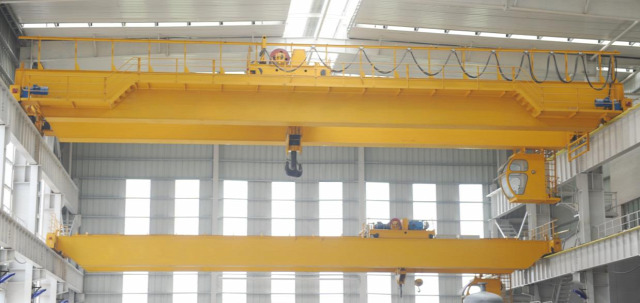In modern industrial settings, automation and advanced control systems have revolutionized heavy-duty material handling. Overhead cranes with 100-ton capacity are crucial for industries like steel manufacturing, shipbuilding, and power plants, where precision, safety, and efficiency are paramount. One of the key innovations in optimizing these operations is the integration of Programmable Logic Controller (PLC) systems.
PLC systems provide intelligent control, automation, and monitoring capabilities that significantly enhance crane performance. This article explores how PLC systems improve the efficiency, safety, and reliability of overhead crane 100 ton operations.

Understanding PLC Systems in Overhead Cranes
What is a PLC System?
A Programmable Logic Controller (PLC) is an industrial digital computer used to automate electromechanical processes. It is widely implemented in crane systems to provide real-time control and monitoring functions. Unlike traditional relay-based control systems, PLCs offer flexibility, reliability, and scalability.
Key Components of a PLC System
A typical PLC system in an overhead bridge crane for sale consists of:
-
Central Processing Unit (CPU): Executes logic and control instructions.
-
Input Modules: Collect data from sensors, switches, and limiters.
-
Output Modules: Send commands to motors, brakes, and hoists.
-
Human-Machine Interface (HMI): Allows operators to interact with the system.
-
Communication Interfaces: Enable connectivity with other systems for data exchange.

How PLC Systems Enhance 100-Ton Overhead Crane Operations
1. Improved Precision and Control
PLC systems enable highly precise load positioning by regulating the speed and movement of the crane components. With advanced feedback loops, the system can adjust motor torque and speed to minimize load sway and ensure accurate placement of heavy loads.
2. Enhanced Safety Mechanisms
Safety is critical in heavy-duty crane operations. PLC systems incorporate multiple safety features, including:
-
Overload Protection: Prevents the crane from lifting loads beyond its rated capacity.
-
Emergency Stop Functions: Ensures quick halting in case of an anomaly.
-
Collision Avoidance: Uses sensors to detect obstacles and prevent accidents.
-
Anti-Sway Technology: Reduces load oscillations for safer handling.
3. Automation and Smart Functions
Automation via PLC systems allows for seamless operation with minimal manual intervention. Key automation features include:
-
Preprogrammed Lift Sequences: Reduces human error and enhances efficiency.
-
Load Monitoring and Balancing: Adjusts lifting dynamics based on load weight and position.
-
Remote Operation Capabilities: Enables control from a safe distance using wireless HMI interfaces.
4. Energy Efficiency and Cost Reduction
PLC-controlled cranes optimize energy consumption through variable frequency drives (VFDs), which regulate motor speed based on load demand. This results in:
-
Reduced power consumption
-
Lower operational costs
-
Extended equipment lifespan
5. Real-Time Monitoring and Diagnostics
One of the significant advantages of PLC integration is real-time data collection and diagnostics. Operators and maintenance teams can access:
-
Live operational data to monitor crane performance.
-
Predictive maintenance alerts that prevent unexpected failures.
-
Error logs and troubleshooting insights to expedite repairs.
6. Integration with Industry 4.0 and IoT
PLC systems are designed to integrate with modern industrial automation frameworks, such as:
-
Internet of Things (IoT): Enabling remote monitoring and cloud-based analytics.
-
Big Data Analytics: Providing insights for operational efficiency improvements.
-
AI-Based Predictive Maintenance: Using machine learning to predict failures before they occur.
Conclusion
The integration of PLC systems in 100-ton overhead crane operations significantly enhances efficiency, precision, safety, and cost-effectiveness. With real-time monitoring, automation, and advanced safety mechanisms, PLC-controlled cranes offer a smarter and more reliable solution for heavy-duty lifting. As industries continue to embrace digital transformation, PLC systems will play an even more critical role in optimizing crane performance and ensuring workplace safety.

